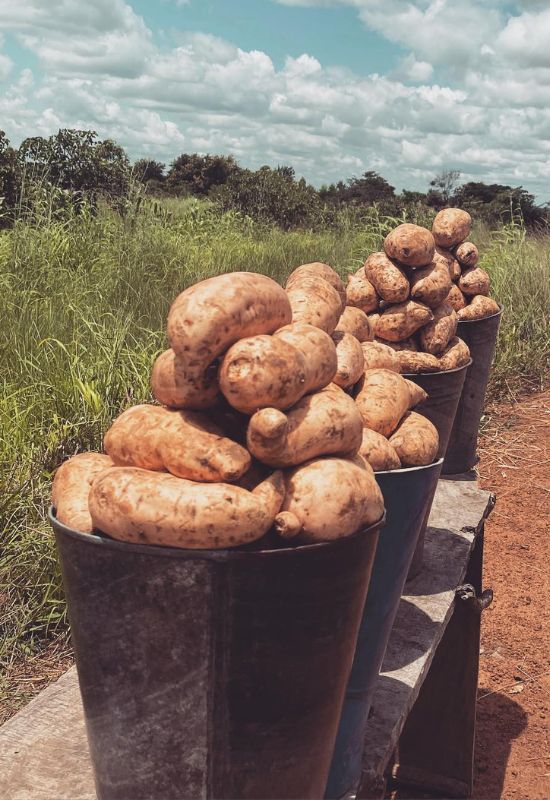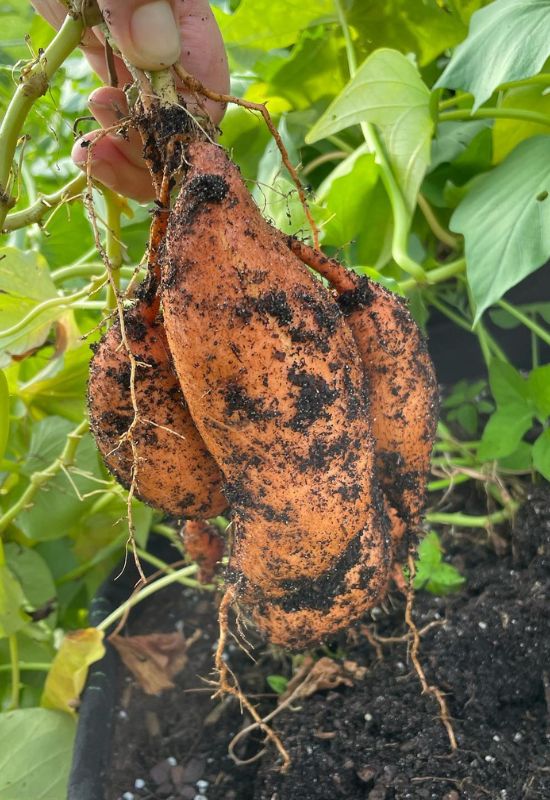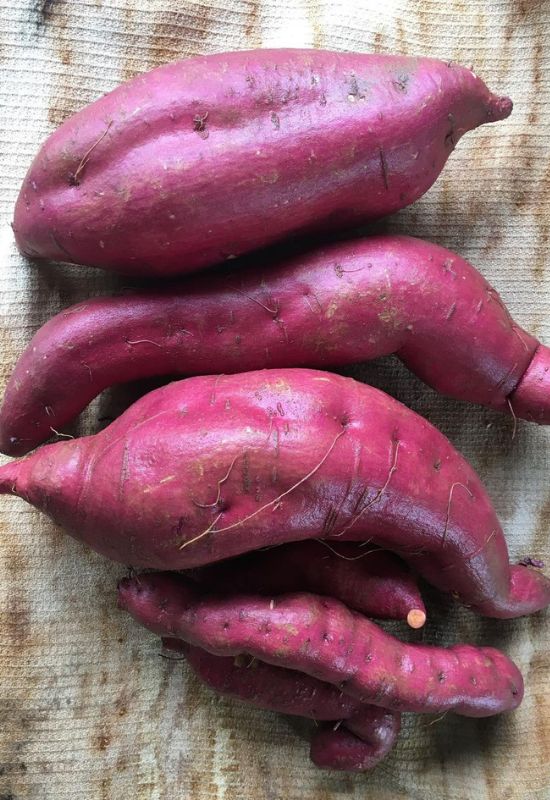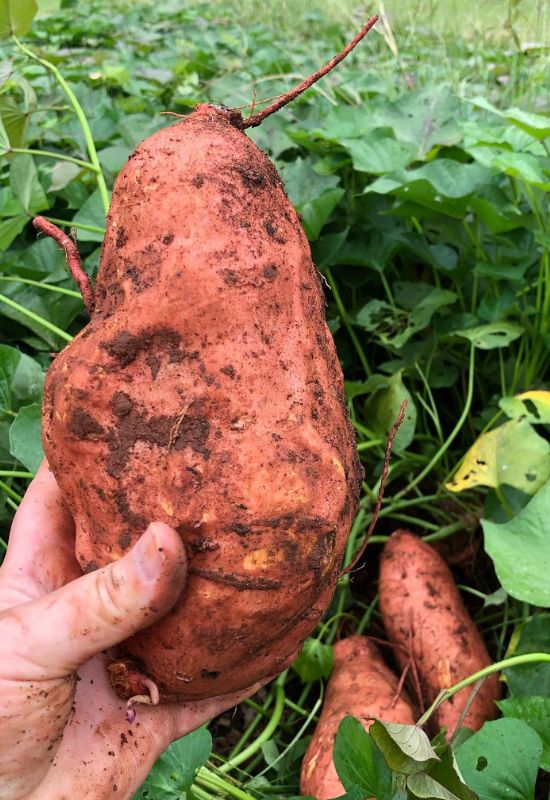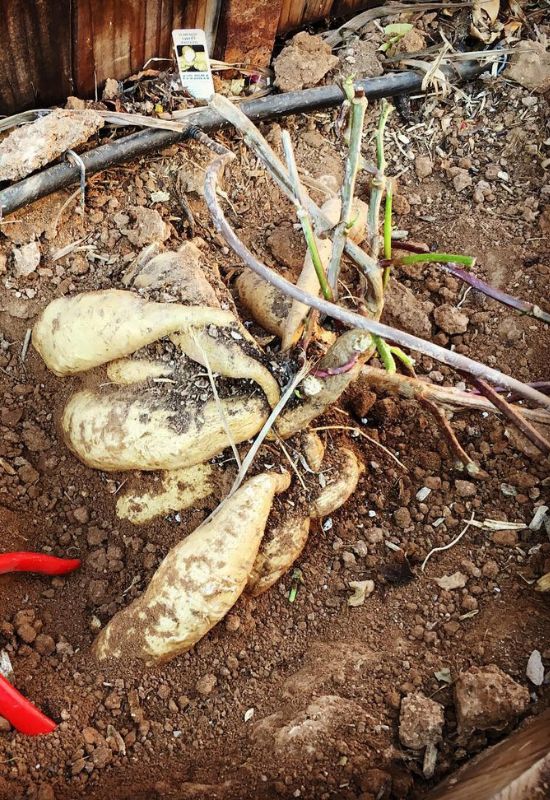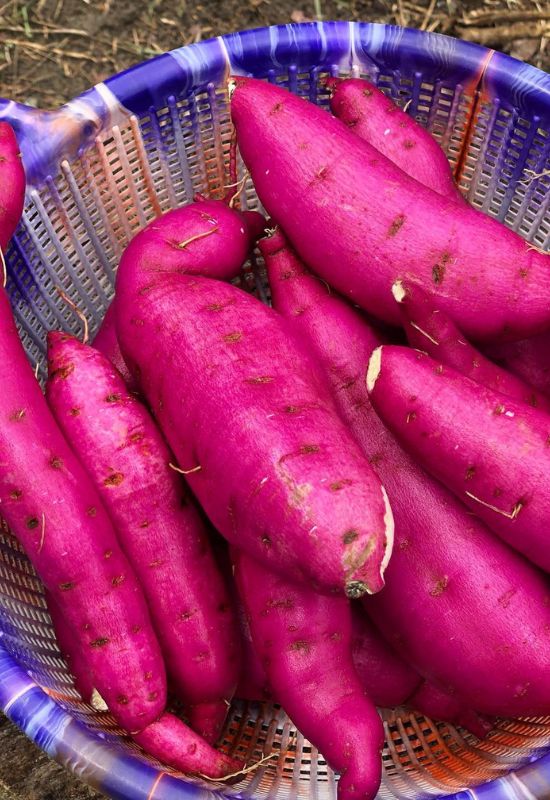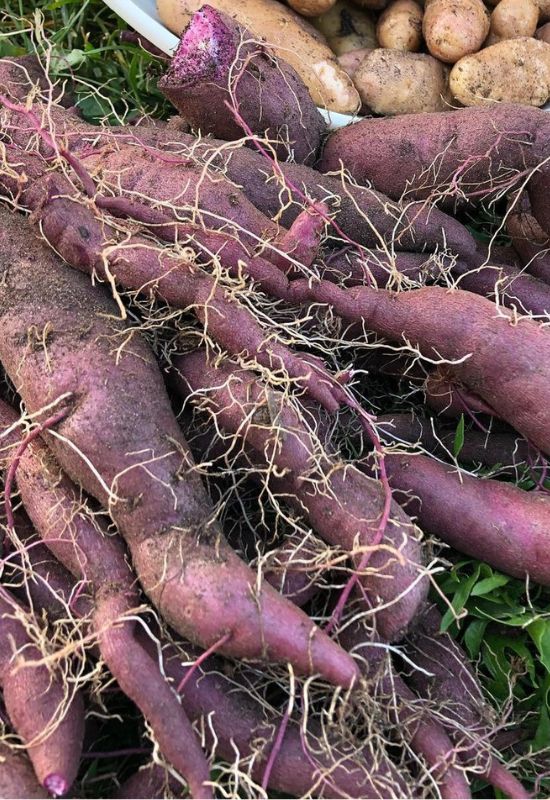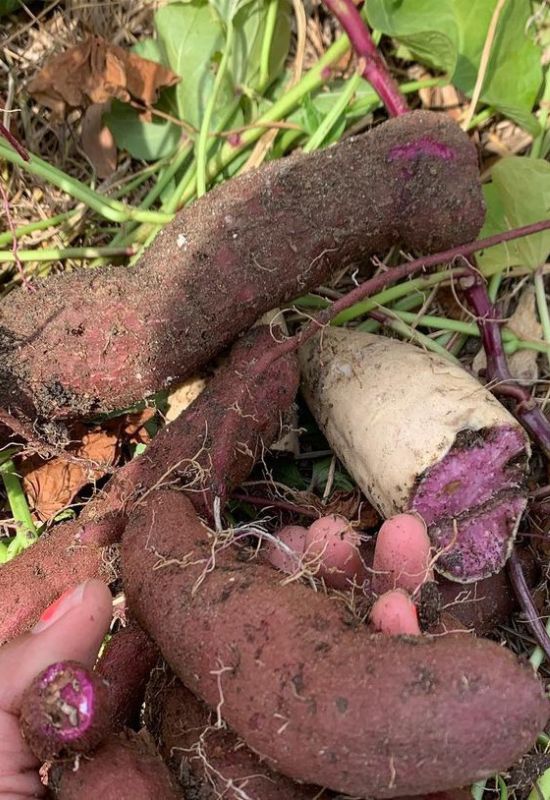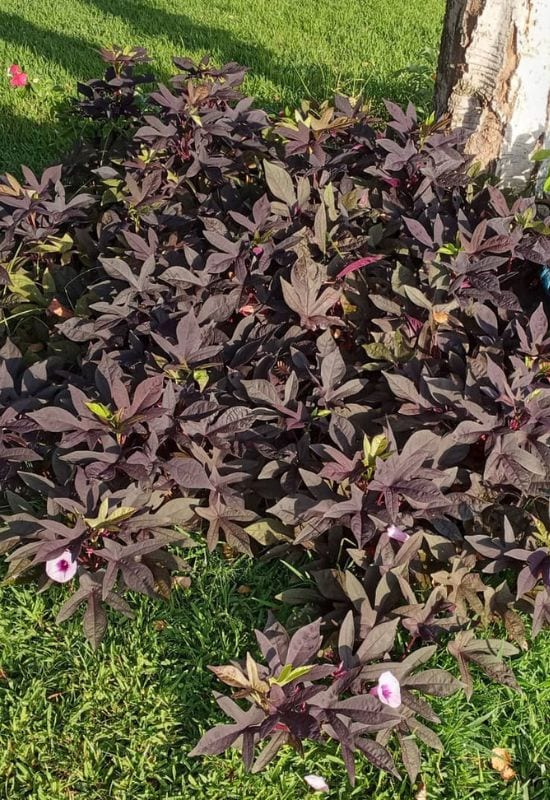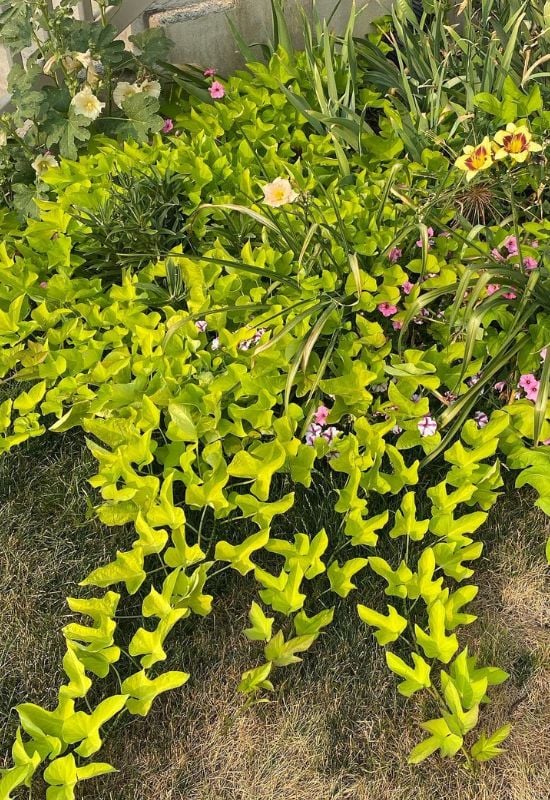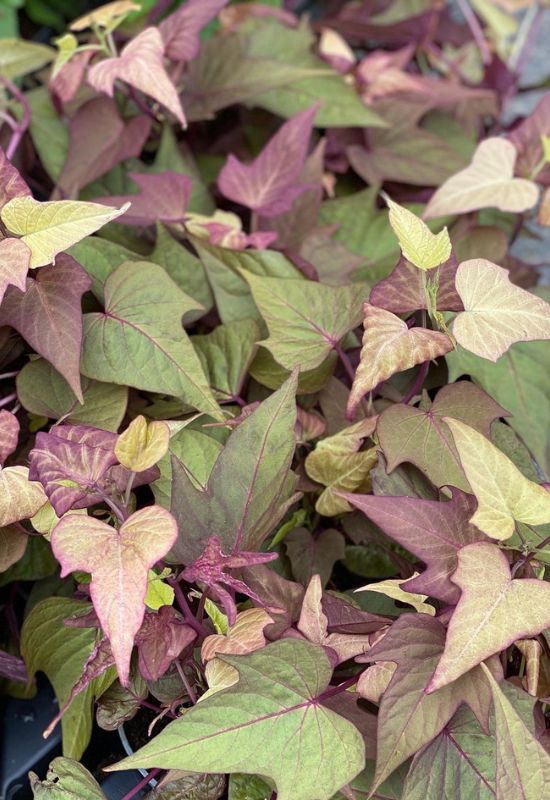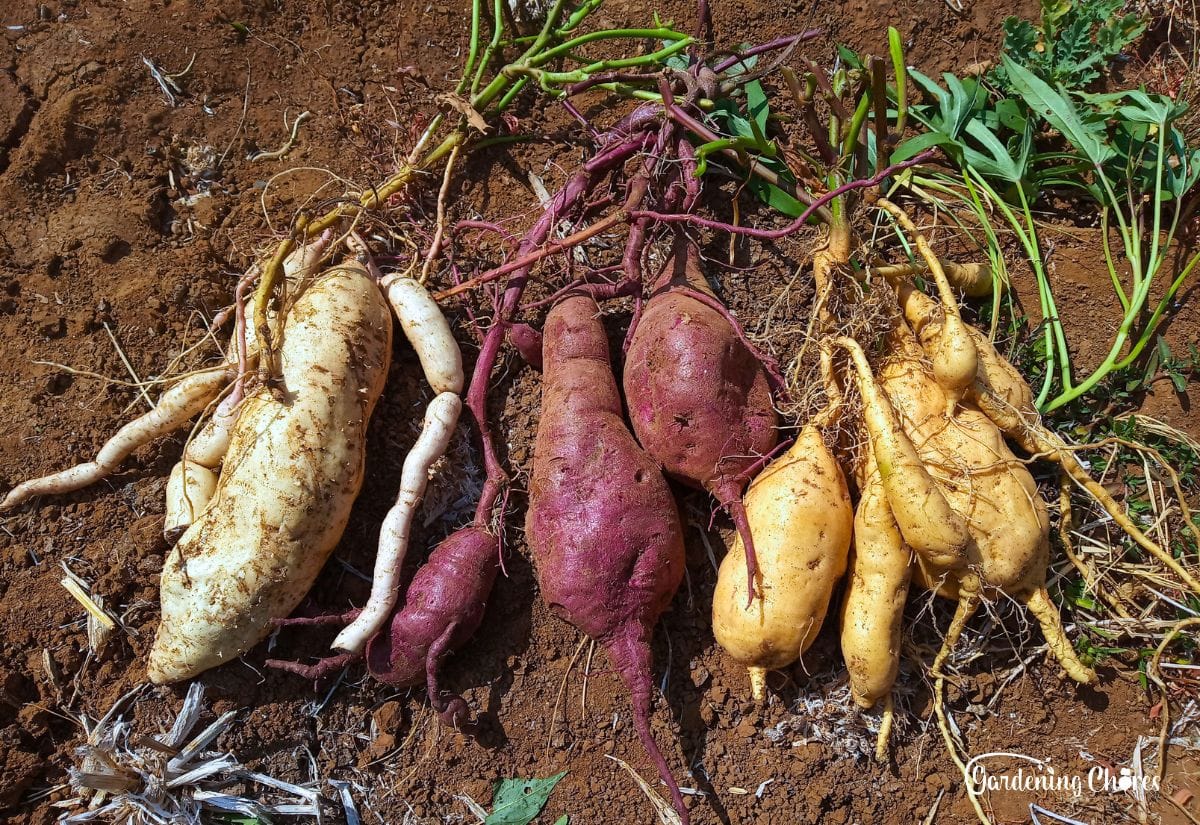
Sweet potatoes are often treated as a specialty dish that are only cooked up on festive occasions, but this delicious root vegetableshould be enjoyed all year long in a wide array of culinary dishes. And what better way to have a hearty supply than to grow them in your home garden.
Typically thought of as a “southern crop”, sweet potatoes will add another level of self-sufficiency to gardens in all climates, and it can be a real joy to cultivate these precious vines.
If you are an avid lover of sweet potatoes, or even if you are just getting into growing them, here’s a list of 24 different types of sweet potatoes with their own subtle nuances of flavor, growth characteristics, and colors.
All About Sweet Potatoes
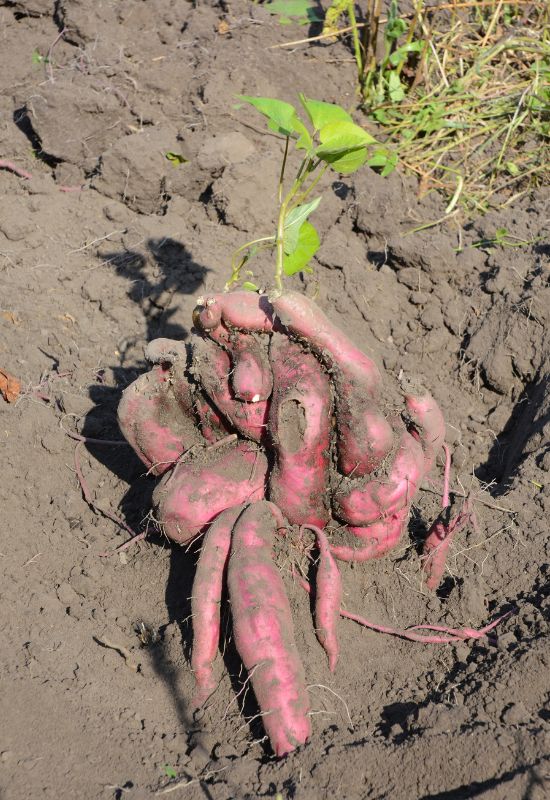
As a child, I detested sweet potatoes, yet every family holiday I had the hononur to be seated beside my grandfather. To hold this coveted position, however, I had to eat a small helping of the orange vegetables.
As the years passed, it quickly became a competition to see who could eat more of them, my grandpa or I, and my love for these delicious, and nutritious, roots was born. I am now growing them in my own northern garden, and I am pleased to learn the number of cultivars to choose form.
Sweet potatoes (Ipomoea batatas) are a root vegetable from Central and South America. In their native climates, they are actually perennial though most people cultivate them as annuals. They are typically grown in long, hot climates but many are now bred for short, cooler seasons.
Sweet potato plants are typically grown from slips that sprout from last year’s sweet potatoes but they can also be grown from cuttings taken from the mature vines which can reach an impressive 3m (10 feet) long, though around 1m (3-4 feet) is more common. The vines can produce pretty, trumpet-shaped flowers, though this is unfortunately very uncommon.
The root vegetables that we eat generally take 90 to 120 days to mature from planting. These tuberous roots have sweet flesh that can be shades of orange to red, white and cream, or purple. Though the entire plant is edible, most of us grow them for these underground treasures.
Is It A Yam, Sweet Potato, Or Potato?
There is great confusion in grocery stores about whether you are buying a sweet potato or a yam. The most common description is that the white ones are sweet potatoes while the others are yams (a notion I believed for many years), but this is shockingly untrue. In the same way, it is often asked whether sweet potatoes are actually a potato.
Sweet potatoes, yams, and potatoes are very different from each other and are almost impossible to confuse.
Sweet potatoes (of the Convolvulaceae family) are actually related to morning glories as can be seen by the trumpet-shaped flowers. The root vegetable that we eat can be a variety of colors but they are all sweet potatoes.
Yams (of the family Dioscoreaceae) are a root with coarse, bark-like skin and insides that are drastically different from the succulent sweet potato.
The confusion between sweet potatoes and yams arose in the 1930s, when Louisiana growers marketed a new sweet potato variety as a yam to distinguish it from other sweet potato varieties.
To this day, several sweet potato varieties are still called “yams” even though they are clearly not.
Sweet potatoes are also very different from potatoes (of the family Solanaceae).
Though the both grow underground, sweet potatoes are a tuberous root while potatoes are an actual tuber (a small distinction, but a distinction nonetheless).
Beyond the Classic Orange: 24 Colorful Sweet Potato Varieties that Offer Edible Delights and Garden Splendor
Sweet potatoes come in orange, white, purple, and there are even some ornamental ones to add beauty to your garden.
Here are some awesome sweet potatoes to try your hand at growing this year.
Orange Sweet Potatoes
By far, the most common sweet potato you will run across in the grocery store has orange flesh. Even for the garden, most seed companies sell orange sweet potatoes.
When selecting slips for your garden, most seed companies sell sweet potatoes with an orange flesh. Unlike in the grocery store, however, where almost all the sweet potatoes are comprised by two or three main varieties, there are many different orange sweet potatoes you can grow in the home garden.
Orange sweet potatoes range from light orange to garnet (a precious stone of deep red). They are typically very sweet, with a moist interior that can be used in savory and sweet dishes alike.
Here are some excellent orange sweet potato varieties to try growing in your garden:
1: Centennial

Having been developed in the 1960s, Centennail sweet potatoes are an all-around sweet potato and can be grown from down south up to the far north. The mature in around 100 days.
They are a high yielding variety and have great resistance to wireworms, root knot nematodes, bacterial root rot, and bacterial wilt. Since they are a slightly older variety, however, they are unfortunately susceptible so some other common sweet potato problems.
Many people describe them as a “perfect” looking sweet potato with perfect orange skin and perfect orange flesh, and they can be baked, mashed, in baking, or turned into fries. When cooked, they have moist, sugar interiors that many find appealing.
They also store very well, so make sure to cure them so you can enjoy them all winter long.
2: Radiance
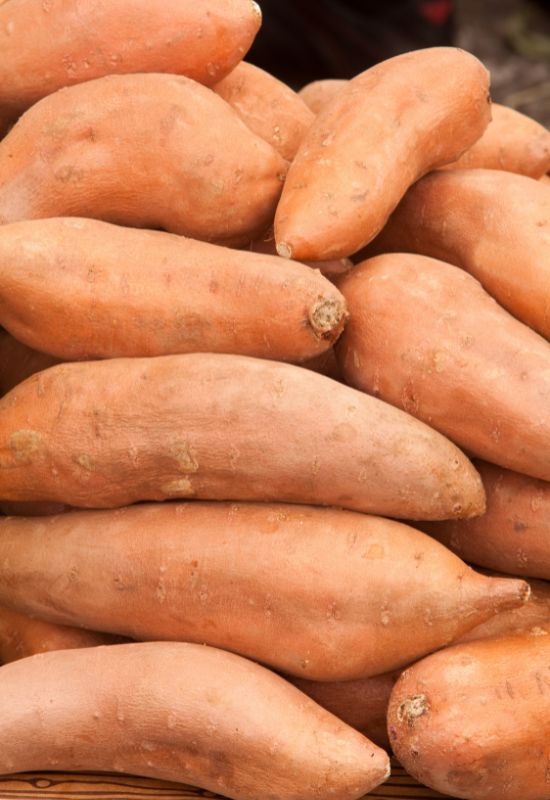
Radiance is a new variety of sweet potato developed in Canada in 2019 to combat the short seasons of northern gardens. In recent trial plots, it has matured in around 80 days, with some growers getting the harvest off in 76 days. It is imperative to cure the sweet potatoes for at least 7 days post-harvest.
It is a very high yielding plant and yields lots of Grade #1 sweet potatoes. In some cases, it produces significantly more than many other common varieties. The sweet potatoes have a dark skin with a nice orange coloured flesh.
It can be grown like any other sweet potato, and it works well in a single or double row planting method. Also, growing it under a black plastic mulch can really help you get this crop off before the frost hits.
3: Mahon Yam
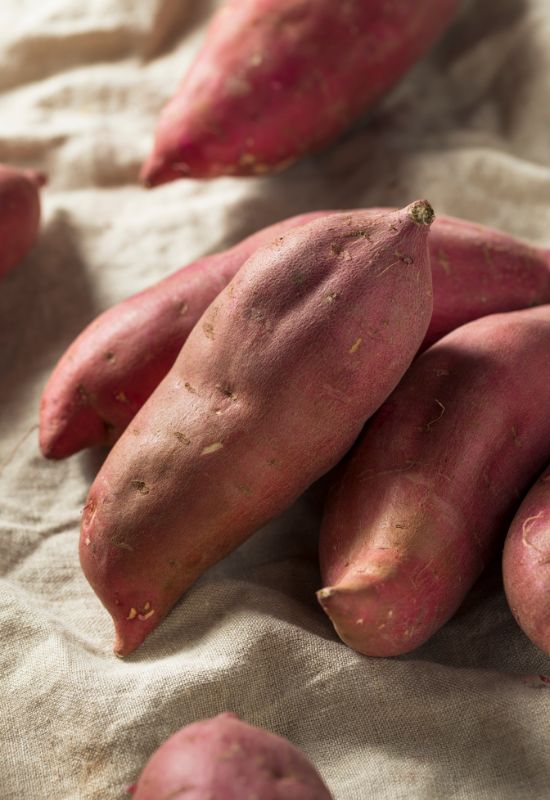
This variety is not a yam but it is an excellent sweet potato. From 2008, this is another early maturing variety, and it can be ready to harvest in around 90 days.
It has a classic sweet potato look with a long uniform shape and blunt ends. It has bright pink skin a deep orange flesh.
The insides are super sweet, and very popular in taste tests. Part of their appeal is because they do not have strings, which some people find off putting in a sweet potato.
The vines themselves are also very unique, sporting seven-lobed leaves, and since the foliage is edible, maybe you can incorporate this in your next sweet potato dish.
These high-yielding plants produce lots of tubers in a concentrated set, making them very easy to harvest.
Make sure to cure the Mahon Yam properly after harvest so they will have excellent storability and keep for the winter.
4: Bayou Belle
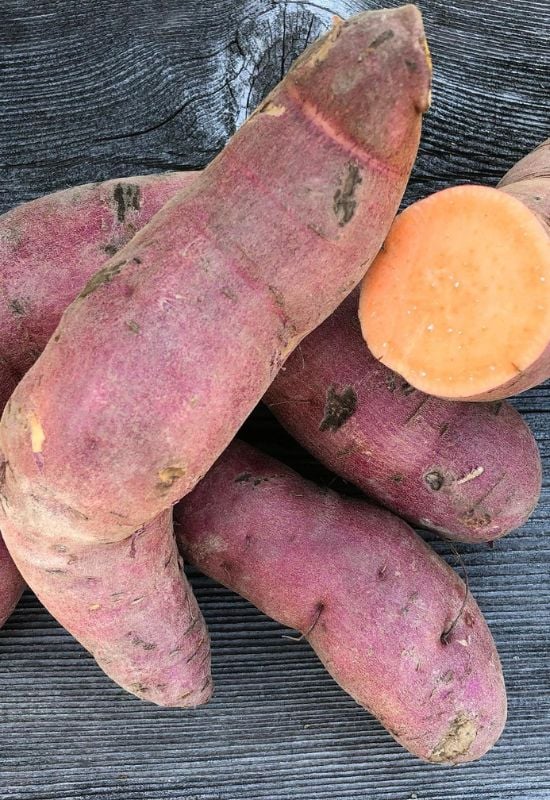
Maturing in 90 to 110 days, the Bayou Belle is great for baking or roasting, due to the fact that is remained quite firm after baking.
They have red skin and a ep orange flesh and are very sweet.
Set out the slips after all danger of frost has passed. Keep them watered, and regularly apply mulch to help conserve moisture throughout the warm summer.
Bayou Belle are resistant to Rhizopus soft rot, fusarium wilt, fusarium root rot, and root knot nematodes
5: Covington
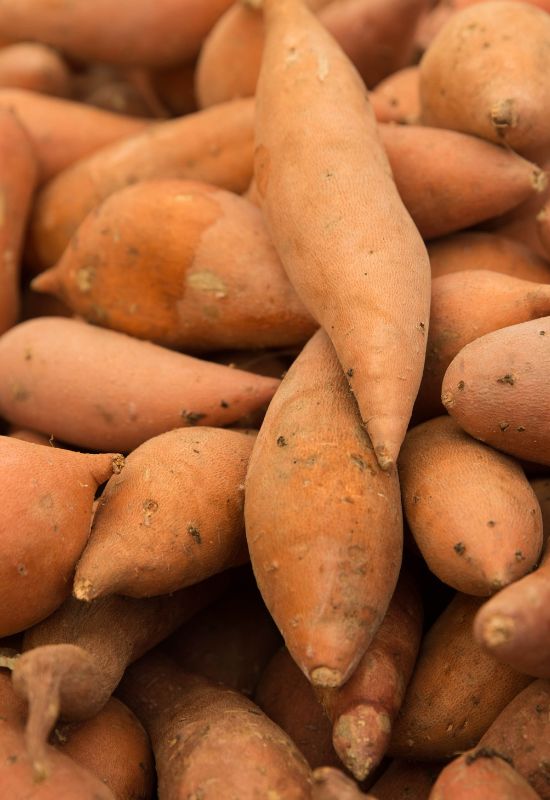
Since it came out in 2005, Covington has been one of the mostpopular sweet potatoes grown in North Carolina and Lousiana.
This says a lot since these are two of the main sweet potato producing states in North America. Even so, Covington can be grown almost anywhere as they mature in around 90 days and are ideal for cool, short seasons.
The copper skin often has a slight rose hue, and the sweet potatoes are medium sized, with a slight curve and tapers at the end.
The plant produces a very concentrated set of sweet potatoes so they are quite easy to harvest whether you are digging by hand or using mechanical equipment. It produces lots of good-sized sweet potatoes.
The orange flesh is moist, firm, dense, and creamy which is why Covington can be used in almost any dish. They are especially popular roasted and mashed or made into a dessery, and they go well with both savoury and sweet spices. On top of that, they are incredibly sweet.
Covington resists fusarium wilt, soil rot, and harmful nematodes.
6: Jewel
When most people think of sweet potato, they think about Jewel. They are another very popular variety and are another of the most commonly grown varieties for both commercial growers and backyard gardeners alike.
Jewels are long elliptical sweet potatoes with copper coloured skin that can have red to purple tones, or even light orange.
The flesh is a deep orange colour that is very moist when cooked, though quite firm. They are very sweet and are a great all-purpose sweet potato that can be used for baking or fried, mahsed or baked.
Jewel are resistant to fusarium wilt, root-knot nematode, internal cork, and sweet potato beetle.
Jewel take longer to mature, and will be ready to harvest in around 120 to 135 days, so make sure to set them out as early as possible, but wait until all danger of frost has passed. Jewel sweet potatoes grow quite large.
Thankfully, they have some resistance to cracking, but make sure to check them early, starting around 110 days to make they are not growing too large.
Plant Jewel potatoes in any soil type from sand, to loam, and even in clay. Start them off with a good dose of compost, and lay off the nitrogen fertilizer.
7: Porto Rico
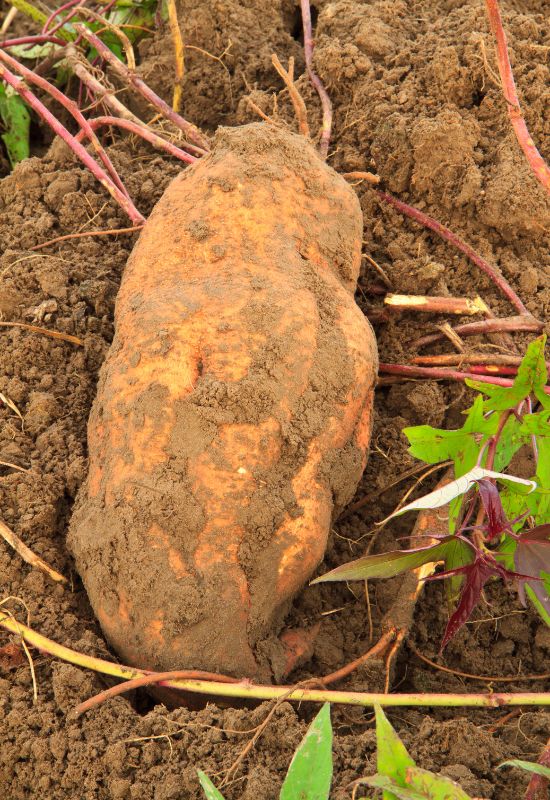
If you are a container gardener, then Porto Rico is an ideal choice. These plants grow 30cm to 75cm (12-30 inches) tall and only 60-90cm (2-3 feet) wide.
They take roughly 110 days to mature, and produce copper-skinned sweet potatoes with light orange flesh. When cooked, they are moist with a high sugar content that are great for baking.
The greatest downfall of Porto Rico is they are not very resistant to disease, so watch out for fusarium wilt, internal cork, and root-knot nematodes in particular.
To protect your crop, make sure to practice a strict crop rotation in your garden to prevent the spread of diseases.
8: Garnet
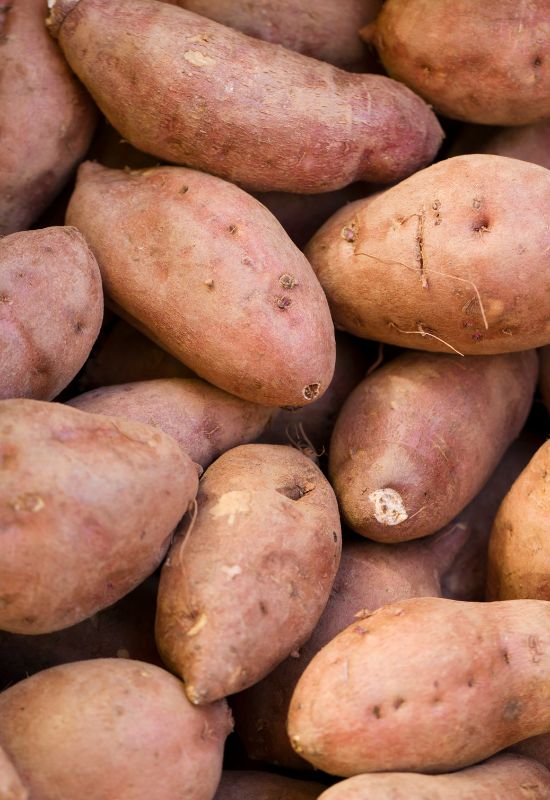
Another very common sweet potato in North American grocery stores is the Garnet. Ironically, this is another sweet potato that is erroneously called a yam!
As the name implies, these medium-sized sweet potatoes have dark red skin that can even border on purple. Its orange flesh has a high moisture content but holds its shape when baked.
It is less sweet than many other varieties, and while it is excellent mashed it is commonly used for baking and has a pumpkin-like texture and flavour.
One reason for the Garnet’s popularity is that it makes excellent French fries.
9: Bellevue
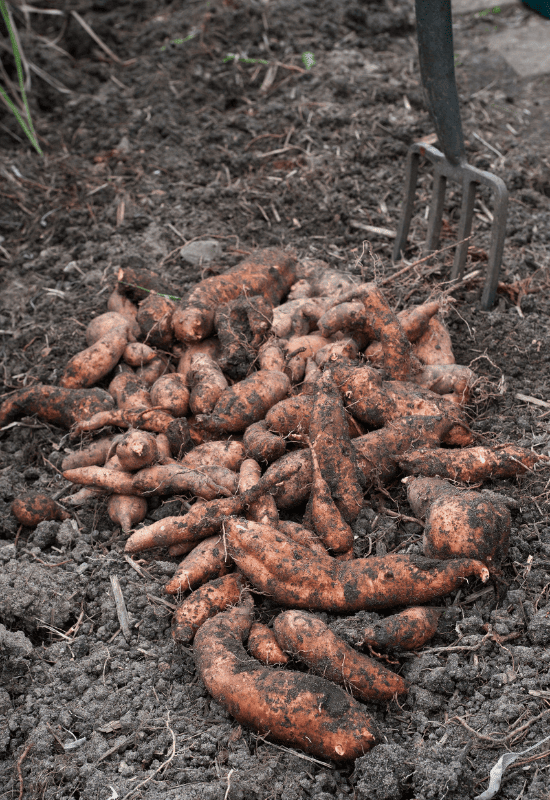
Bellevue is a copped skinned sweet potato with bright orange insides. It is different from many other varieties and fits itself into many unique conditions.
For starters, Bellevue grows better than most sweet potatoes in poor conditions. If your garden is a little worn, or if you are just starting a plot in a less-than-ideal environment, Bellevue will still give you a decent harvest. It also handles most soil types, and grows especially well in sandy soil.
Another special point of Bellevue is that it is a storage sweet potato in the fact that it doesn’t taste very good right after harvest. Once it has been stored, however, its flavour really comes out.
10: Burgundy
Burgundy is a red-skinned sweet potato with bright orange flesh. It was introduced in 2011 and it matures in around 90 to 100 days.
Burgundy yields slightly less than other sweet potatoes but it is definitely worth growing for its sweet, creamy insides.
Make sure to plant a few extra plants to accommodate for the loss of yield. Don’t be tempted to crowd the plants or you will end up with deformed roots, so make sure each plant is at least 30cm (12 inches) apart.
11: Beauregard
From 1987, the dark orange flesh of this heirloom sweet potato is tender and very creamy, though slightly stringy, with a nutty flavour.
It is quite moist when cooked and unfortunately won’t hold its shape perfectly (there will be some breakdown especially when boiled), and they are excellent for mashing and making baked goods.
Beauregard are another common site in North America but they are grown all over the world and are especially suited for hot, humid locations. They also store very well so are good for shipping or storing in your pantry all winter long.
They are a fast-growing plant, and the tubers will grow very large by 110 days (thankfully, they have good resistance to cracking). Even so, you can often harvest them at a decent size around 100 days after planting.
Beauregard have good resistance to white grub and streptomyces soil rot, but make sure to watch out for root-knot nematodes so make sure to practice a four-year crop rotation if these are a problem in your area.
White Sweet Potatoes
White sweet potatoes (those roots so often mislabeled as yams) are a great addition to your garden. They might be less nutritious than their coloured cousins, but they are just as sweet. As a bonus, they are often less watery, with a more dry, firm texture that some prefer.
Here are some great white-fleshed varieties of sweet potatoes to grow:
12: Hannah
These popular sweet potatoes take 110 days to mature into cylindrical roots with tapered ends. They have a semi-smooth tan skin over a cream coloured flesh.
They are said to have a slightly sweet, earthly flavour. They are starchy, like a regular potato, and firm and dry when cooked but very creamy.
They are less likely to become waterlogged than orange varieties, and they hold their shape very well. They are popular baked, roasted, fried, or in casseroles.
They are very common in California, but they can be grown in a wide range of conditions. Make sure your season is long enough with sufficient warmth and you will be rewarded with an excellent harvest of Hannah sweet potatoes.
13: O’Henry
These very prolific sweet potatoes came out in the 1990s and are a white strain derived from the orange Beauregard. They are especially suited for hot, humid conditions but they can be grown successfully wherever the season is warm and long enough. As a perk, they mature rather quickly at around 90 to 100 days, making them suitable for a wide range of locations.
O’Henry have good resistance to white grub, streptomyces soil rot, and cracking, but follow a strict crop rotation to preven root-knot nematodes from becoming a problem.
14: Sumor
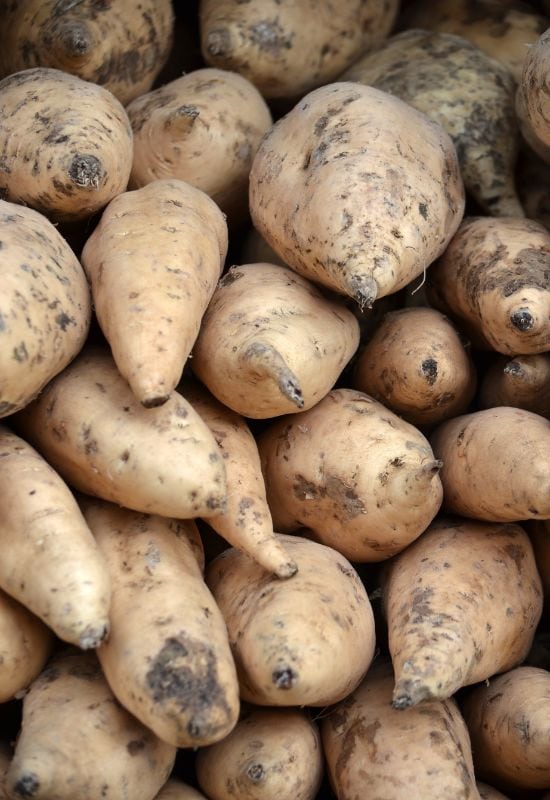
Another tan-skinned sweet potato, Sumor have flesh that ranges from white to yellow. They have excellent disease resistance and are ideally suited for warm climates.
The flesh is dense and creamy without being dry, and they are excellent baked, fried, roasted, boiled, or in soups and stews. They are even good in pies and other baking, making them an exceptional all-around sweet potato in the kitchen.
If you live in northern climates where the weather isn’t warm enough, consider growing Sumor under black plastic to help keep an ideal soil temperature.
15: Murasaki
Murasaki sweet potatoes are originally from Louisiana but have since become very popular in California. They take 100 to 120 days to mature, with 105 days being a good average to produce a whole bunch of uniformly shaped sweet potatoes.
The reddish-purple skin envelopes a pale white interior, which is very versatile in the kitchen and is commonly used to replace russet potatoes in many recipes.
They have good disease resistance and your plants are fairly protected from Rhizopus soft rot, fusarium wilt, and soil rot.
The plants are fairly slow to mature, and may not reach full size in cool climates. If your season isn’t warm enough, consider growing them under black plastic to keep the soil temperature up.
Purple Sweet Potatoes
Do you want a sweet potato that is as nutrient-dense as it is beautiful? Then grow purple-fleshed sweet potatoes. These sweet potatoes either have purple skins and matching interior, or white skin with a purple flesh.
Here are three very wonderful purple sweet potatoes:
16: Lilac Beauty
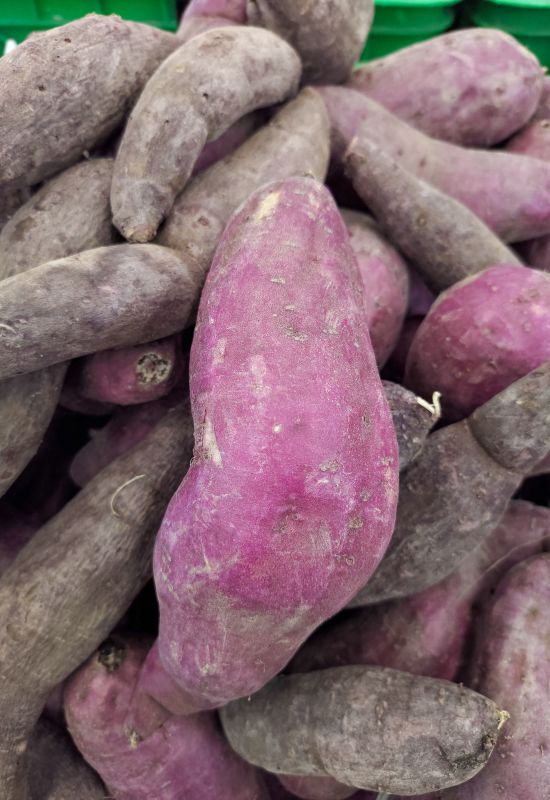
Aptly named, this beautiful sweet potato has purple skin and purple flesh. It is an Asian-type sweet potato, meaning it is not very sweet with a dry but firm texture. Many people claim this is the best tasting purple sweet potato out there.
If you live in a northern garden, try growing Lilac Beauty as they are more productive in cool climates than most other purple sweet potatoes.
17: Stokes
This is a very popular sweet potato, with a purple skin and a very dark purple flesh. Stokes sweet potatoes are very firm and meaty with a very dense and dry texture when cooked.
They have a nice early flavour with a lightly sweetened taste. Try roasting or frying them for a striking dish, as they will lose some colour when boiled or baked. They also make very pretty pureed soups.
Stokes take longer to cook than orange or white sweet potatoes, so account for the extra required time when planning your dinner.
These sweet potatoes are highly nutritious. Their dark purple insides are due to anthocyanins (also found in blueberries) which are very high in nutrients and antioxidants.
Newer strains of stokes have fairly good disease resistance and they can be grown in many different gardens and climates.
Charleston sweet potatoes are another variety that are very similar to the Stokes.
18: Okinawa
This variety of purple sweet potato originated in Japan, and it is also known as the Beni-imo sweet potato. Nowadays, it is very popular in Hawaii.
It has a white or buff skin with shallow eyes and dark purple flesh that is slightly rough. As it takes 120 to 180 days to mature, it is not suited for short season gardens, but it thrives in warm, semi-tropical climates. The sweet potatoes are medium-large and cylinders that taper down to round ends.
Okinawa sweet potatoes are dense and rather starchy with a low sugar content, and have a nutty, almost floral, flavour. They are well suited to baking, boiling, stir frying, but they are also great in slow cookers or gnocchi.
Okinawa sweet potatoes are high in nutrients and antioxidants, and are reputed to have 150% more antioxidants than blueberries which share the similar anthocyanins.
19: Charleston Purple
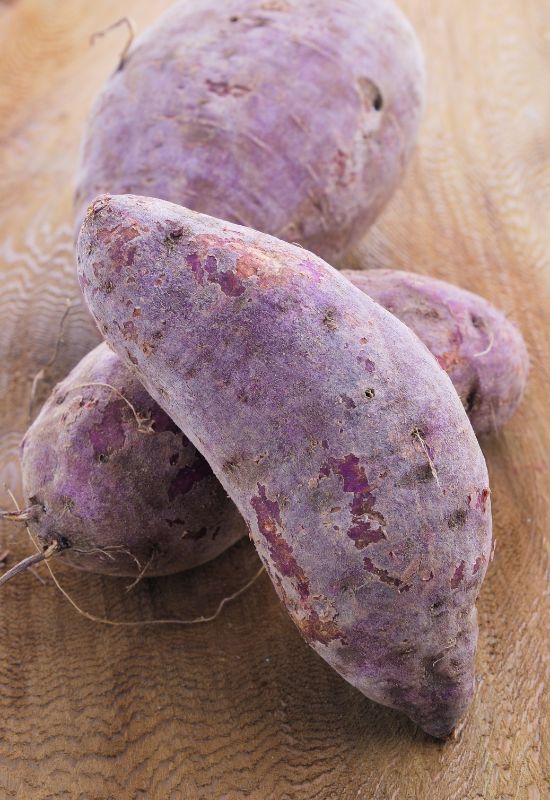
Like stokes
Ornamental Sweet Potatoes
Sweet potatoes are in the same family as morning glories, meaning they have the potential to be truly beautiful plants. This is especially true with ornamental sweet potatoes which are better to look at rather than eat. (Note: you can eat them but they taste gross!)
Ornamental sweet potatoes are grown very much the same as edible sweet potatoes. They are started from slips and have very much the same growing requirements, but your focus is on the vine rather than what’s going on underground.
Unfortunately, sweet potato plants rarely flower, and this is sadly true for ornamental varieties, too. Even so, there are some whose blossoms are truly incredible.
Ornamental sweet potatoes have unique leaf shapes, and the foliage can range in colours from green, to purple, red, or bronze. Here are some striking sweet potatoes to add flair to any garden:
20: Blackie
This fast growing sweet potato plant has deep purple leaves. Not only that, the leaves are shaped like a maple leaf (which I find particularly attractive being a Canuk).
Blackie sweet potatoes will flower, and the blossoms are a light violet colour.
21: Margarita Sweet Potato
This sweet potato also grows very quickly, and is great for a living privacy fence or a wall covering as it is an excellent climber.
The leaves are light green, though they will turn a darker hue when grown in the shade.
22: Sweet Caroline ‘Bewitched with Envy’
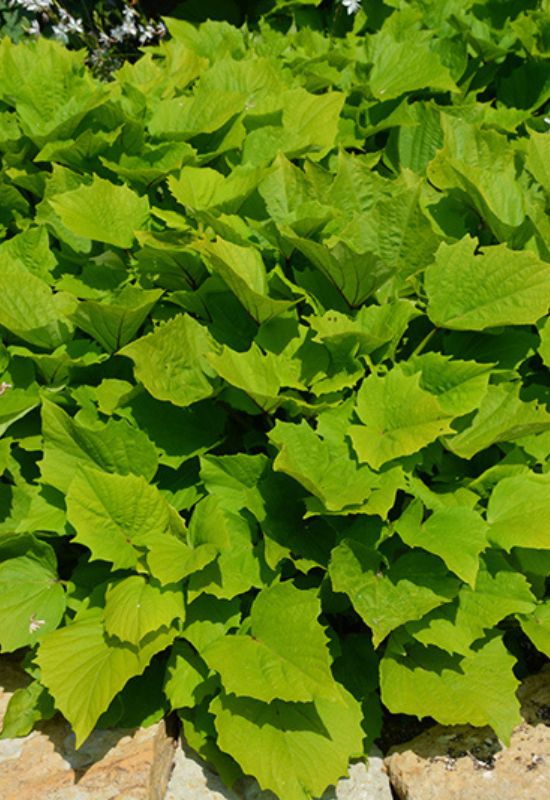
This bright green-leaved sweet potato has shovel shaped leaves. It grows well in part sun to full shade and it is also very heat tolerant.
This plant grows fast and often very unruly. Make sure to provide a trellis for vertical growing, or provide ample space so it doesn’t take over and smother the rest of the garden. Pruning can also help keep this wild plant contained.
23: Desana
Desana also has maple-shaped leaves, but this isn’t the only thing that makes it unique: It has leaves of varying shades of purple on a purple-silver vine!
The plant grows about 1.2m (4 feet) wide so you can add this striking beauty almost anywhere.
24: Medusa
Another sweet potato with maple-shaped leaves, Medusa is a very easy keeper. It is drought tolerant and grows well in part shade to full sun.
It is excellent for container growing as it has a mounding habit rather than trailing, so you can keep this sweet potato in any garden.
Conclusion
Choosing which variety of plants to grow is one of the most fun parts of gardening. But it can also be very difficult, especially when you are starting to grow a new plant or want to try a new cultivar.
Hopefully, this list will help you narrow down which sweet potato you want to grow that will best suit your climate, garden, and dietary preferences.
Which sweet potatoes do you like growing best?

Written By
Amber Noyes
Amber Noyes was born and raised in a suburban California town, San Mateo. She holds a master’s degree in horticulture from the University of California as well as a BS in Biology from the University of San Francisco. With experience working on an organic farm, water conservation research, farmers’ markets, and plant nursery, she understands what makes plants thrive and how we can better understand the connection between microclimate and plant health. When she’s not on the land, Amber loves informing people of new ideas/things related to gardening, especially organic gardening, houseplants, and growing plants in a small space.

